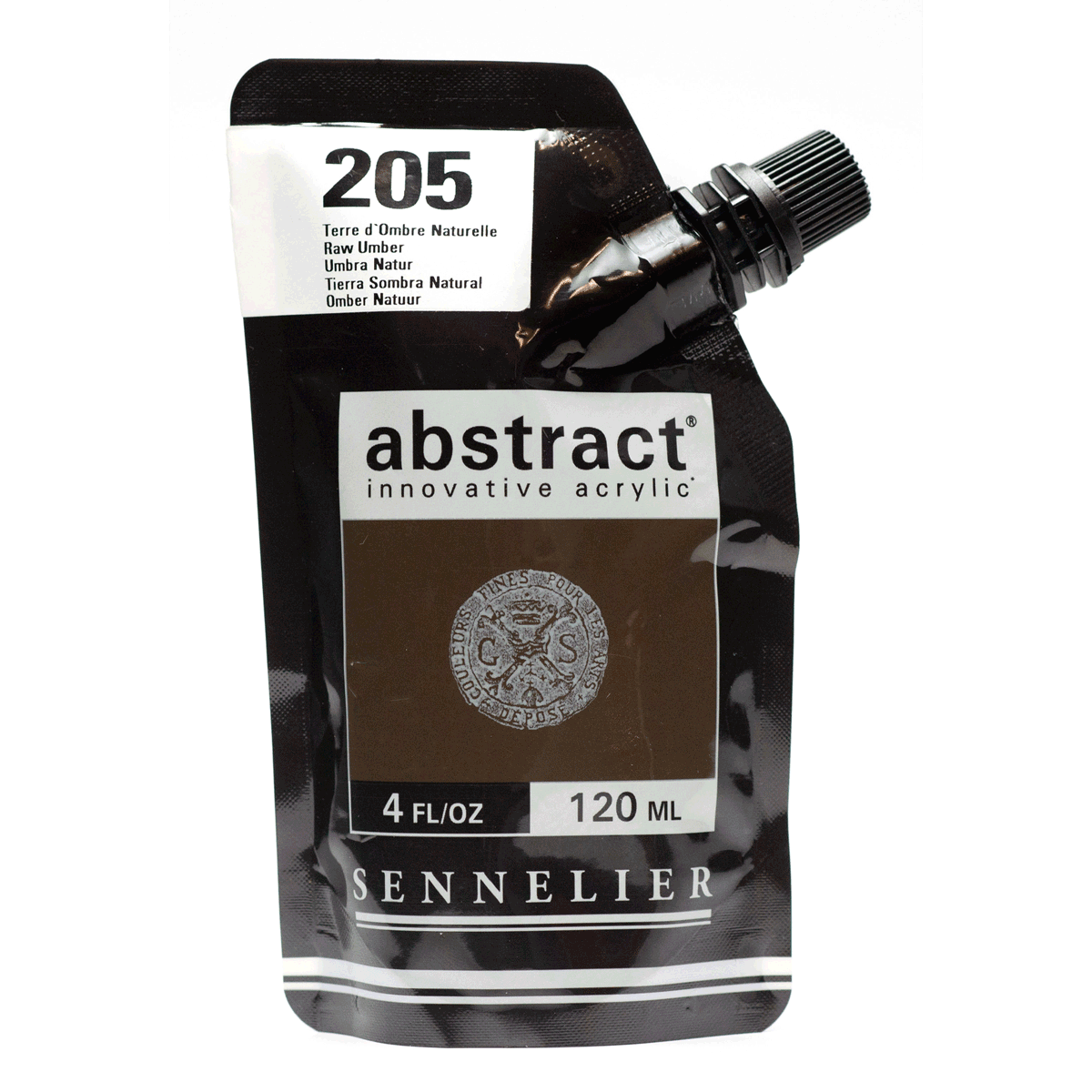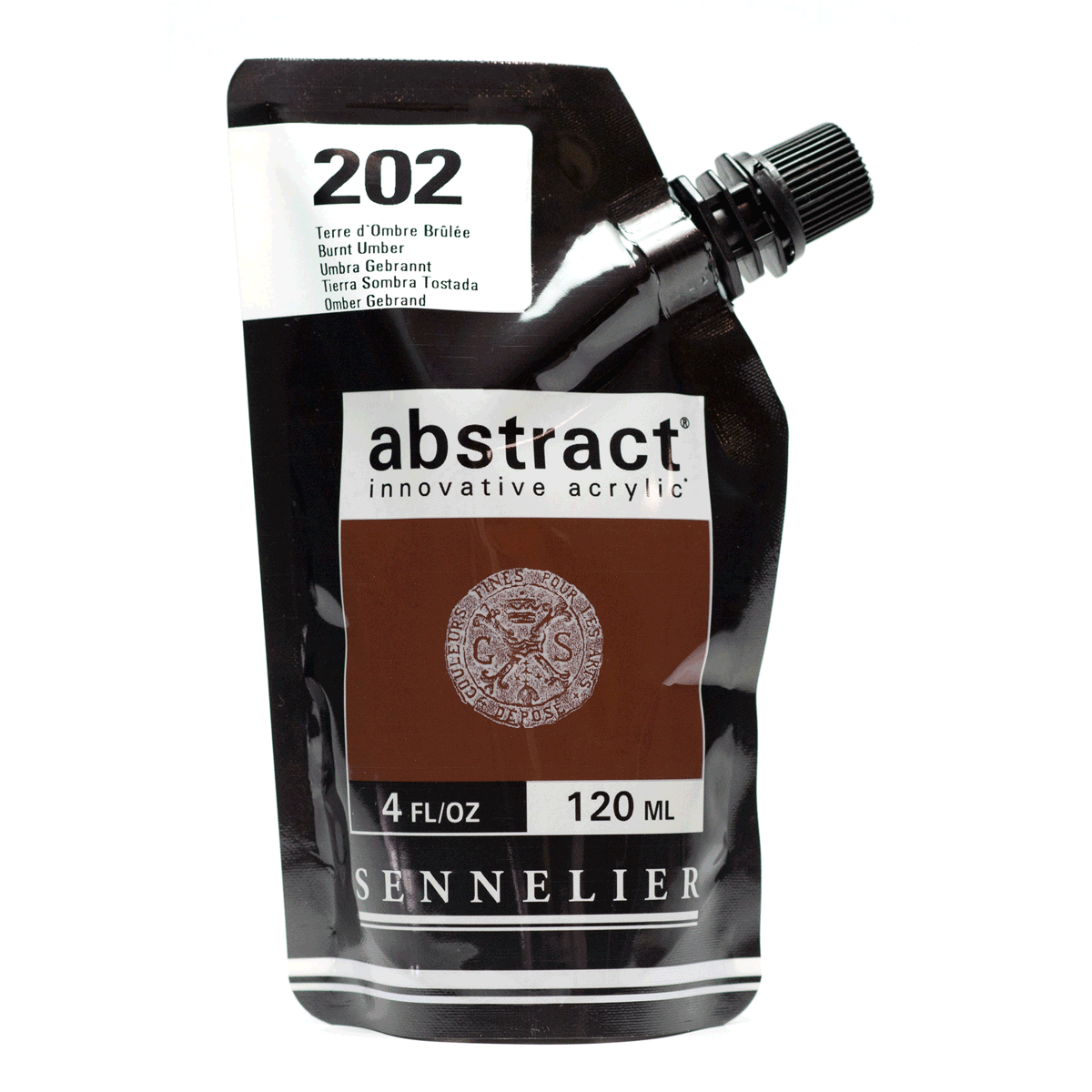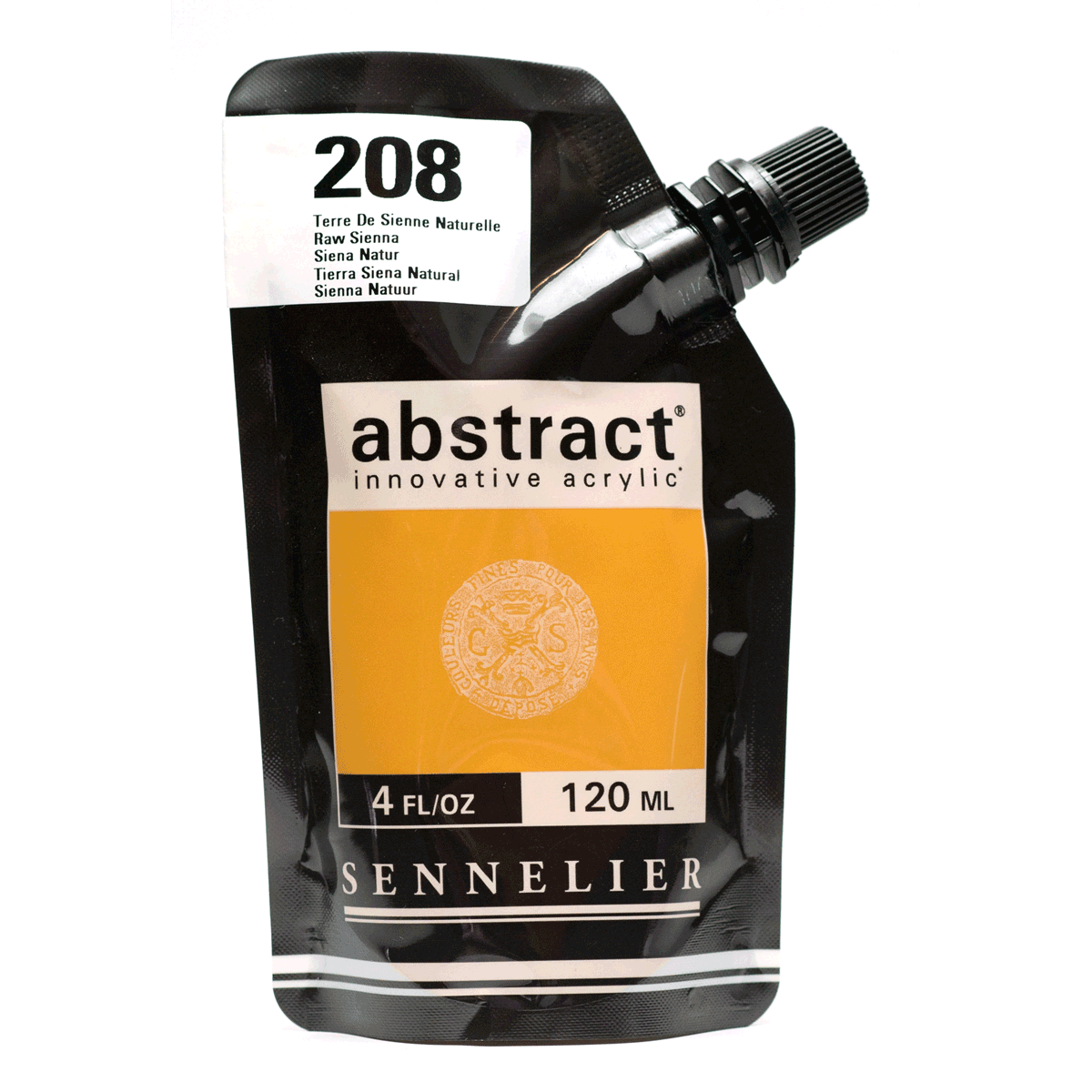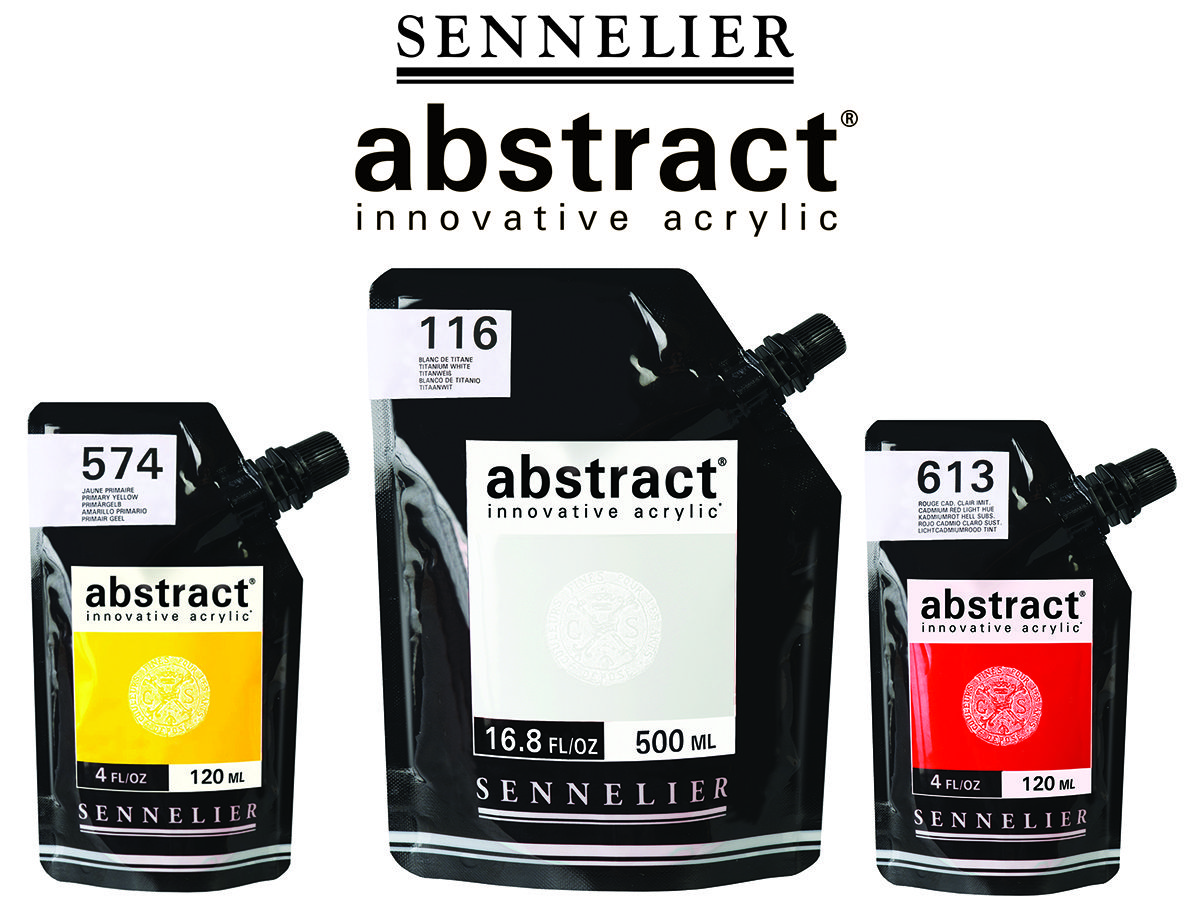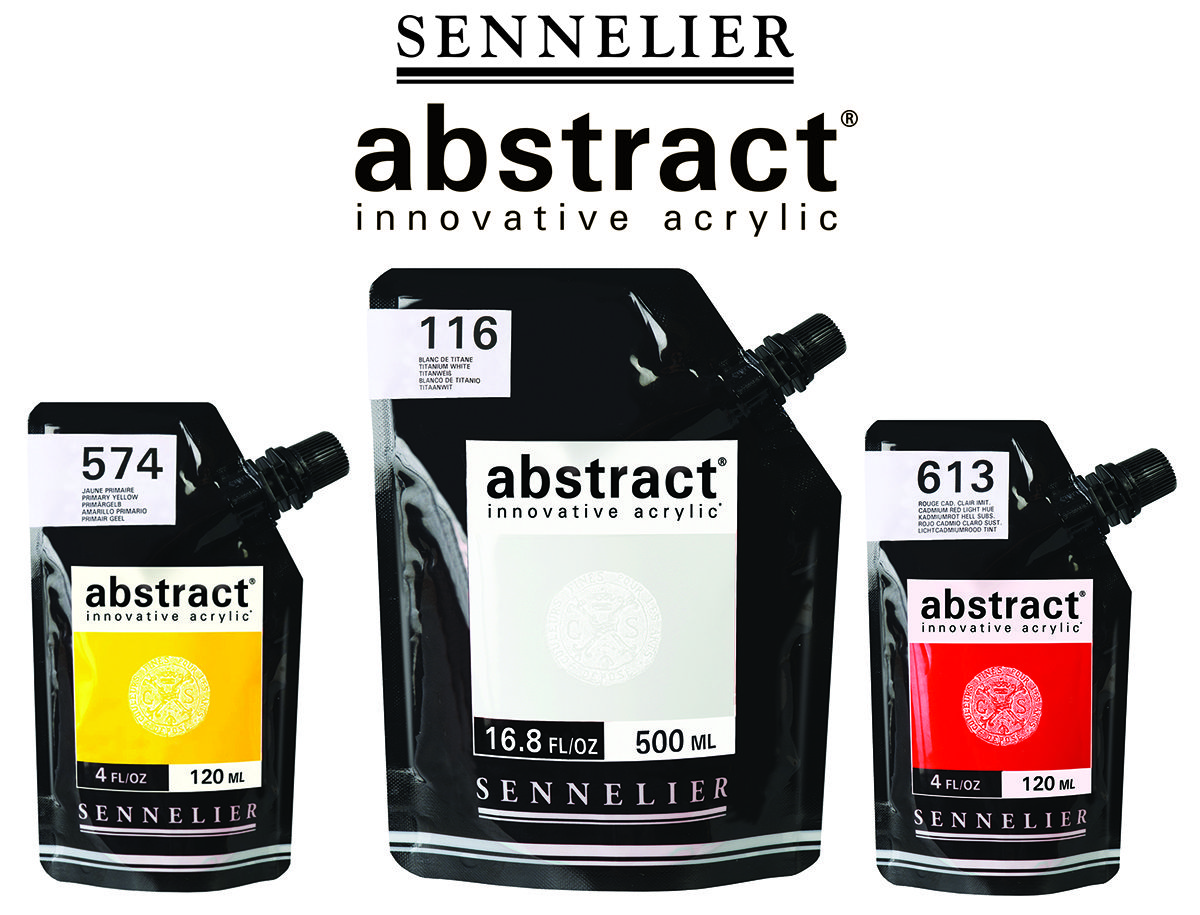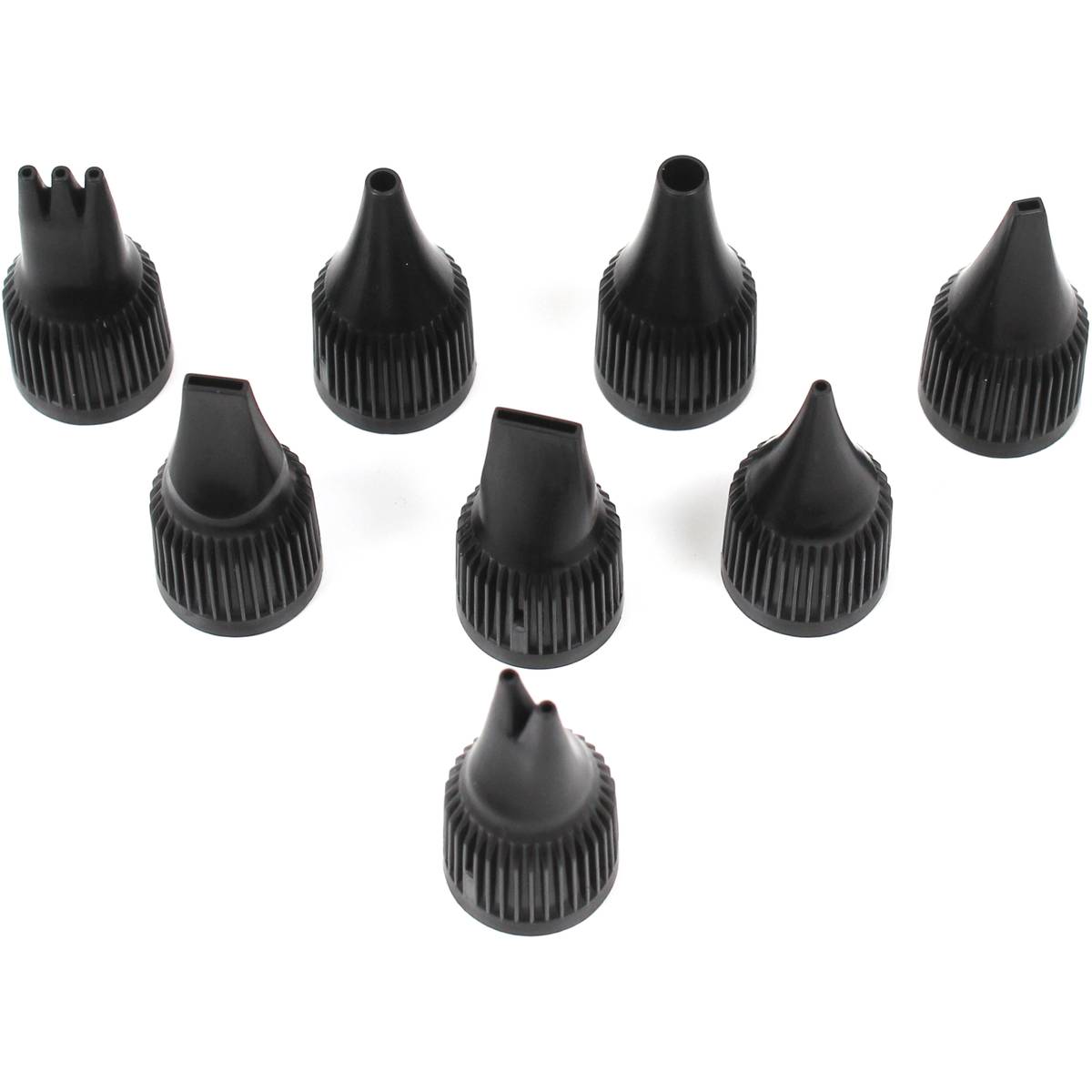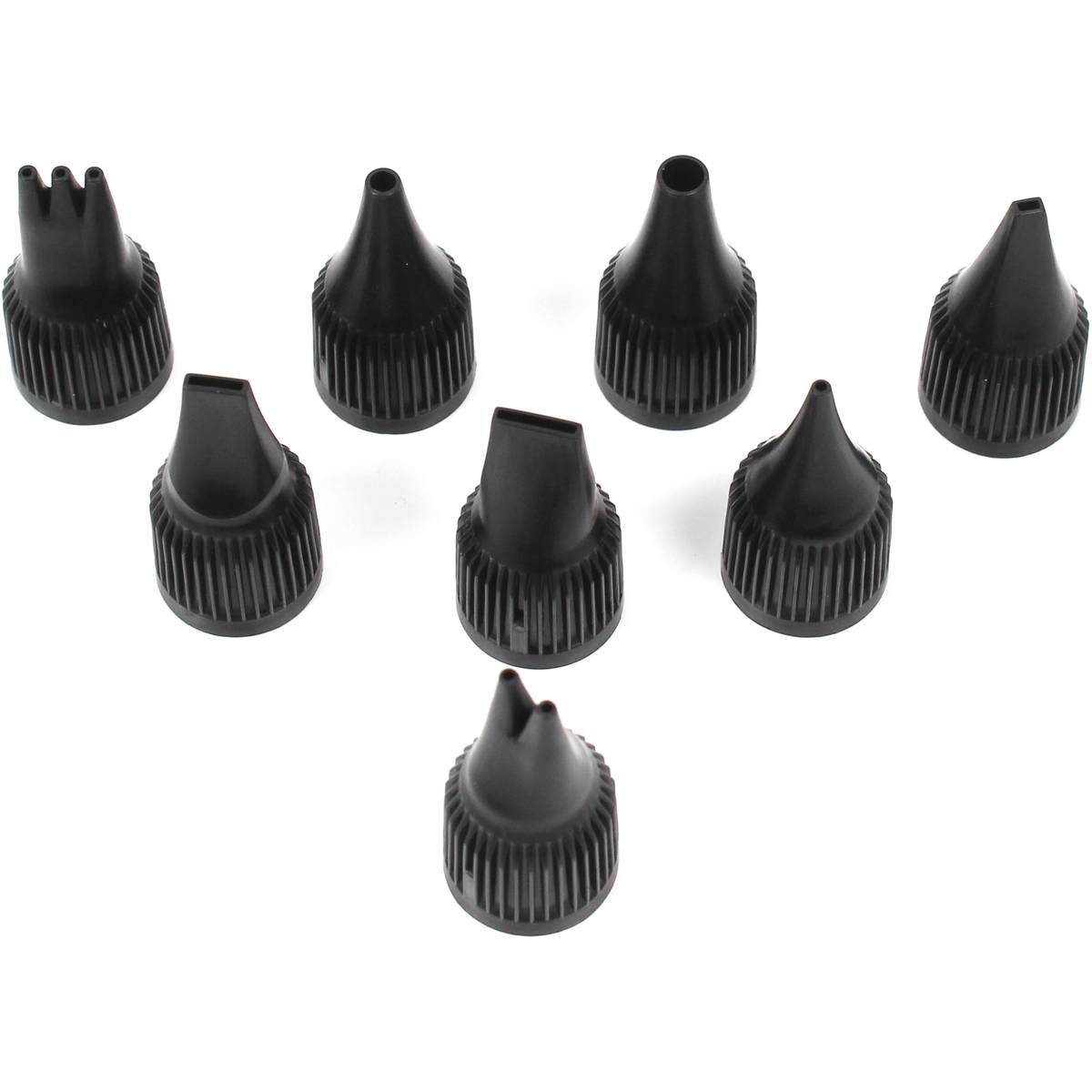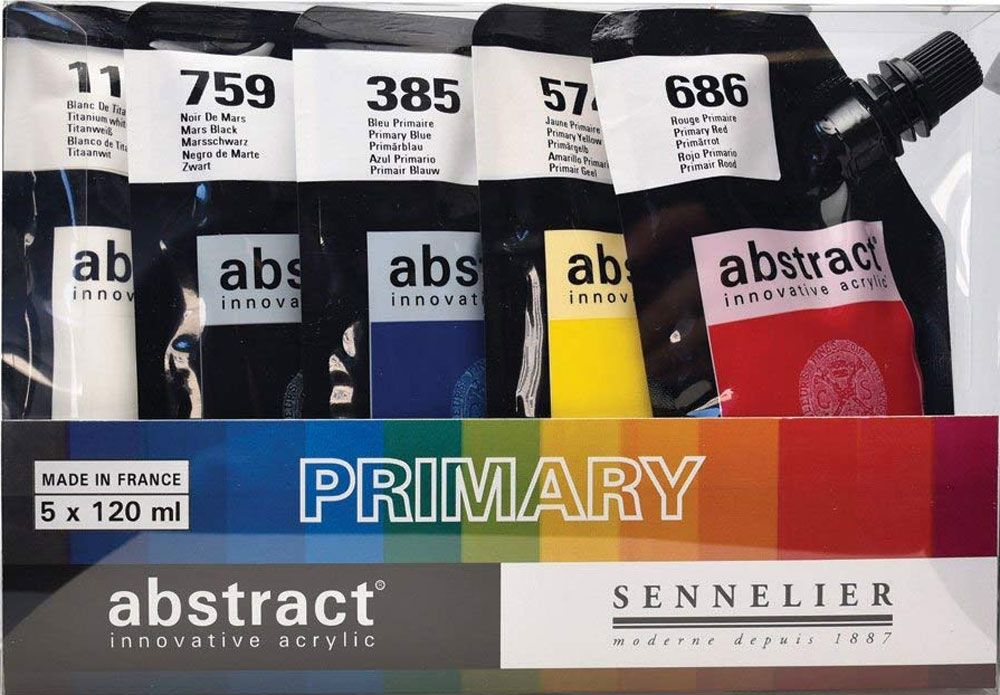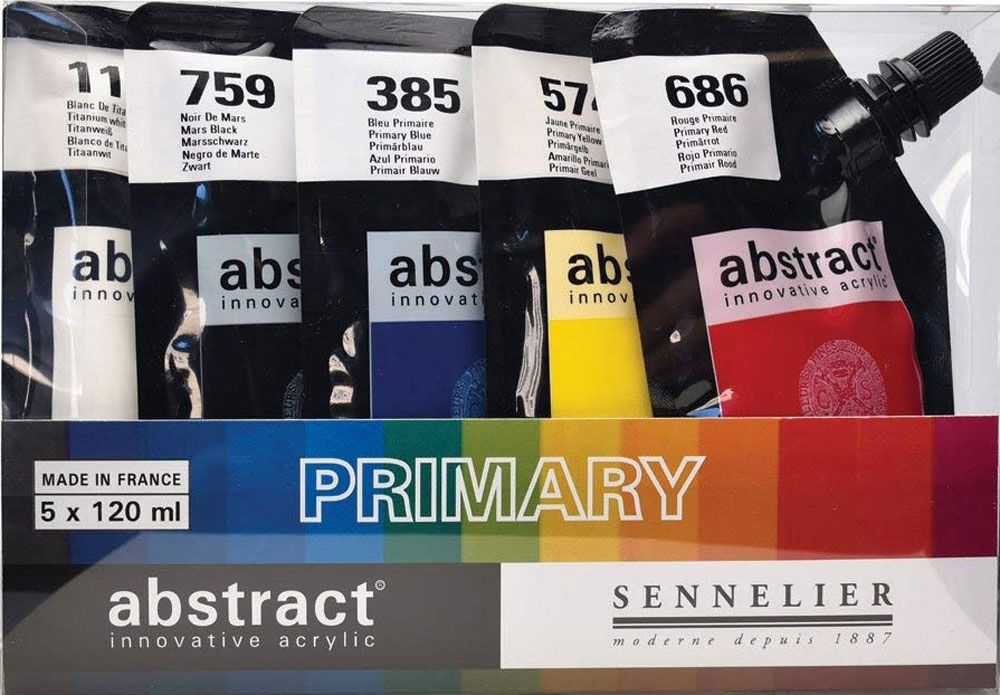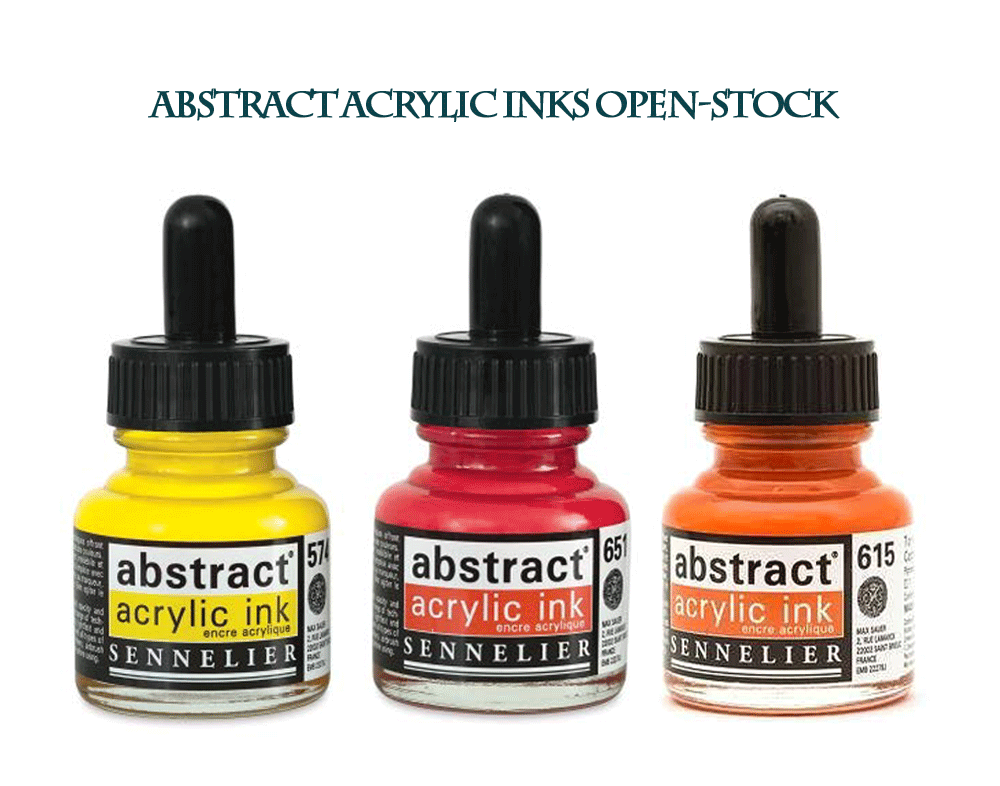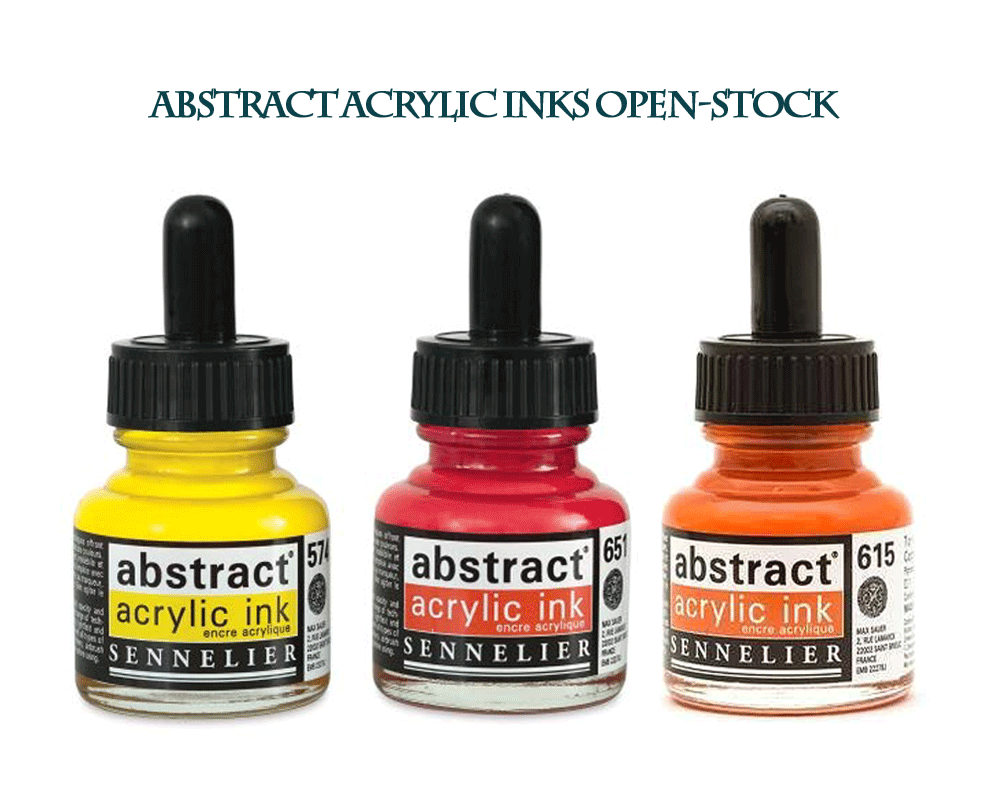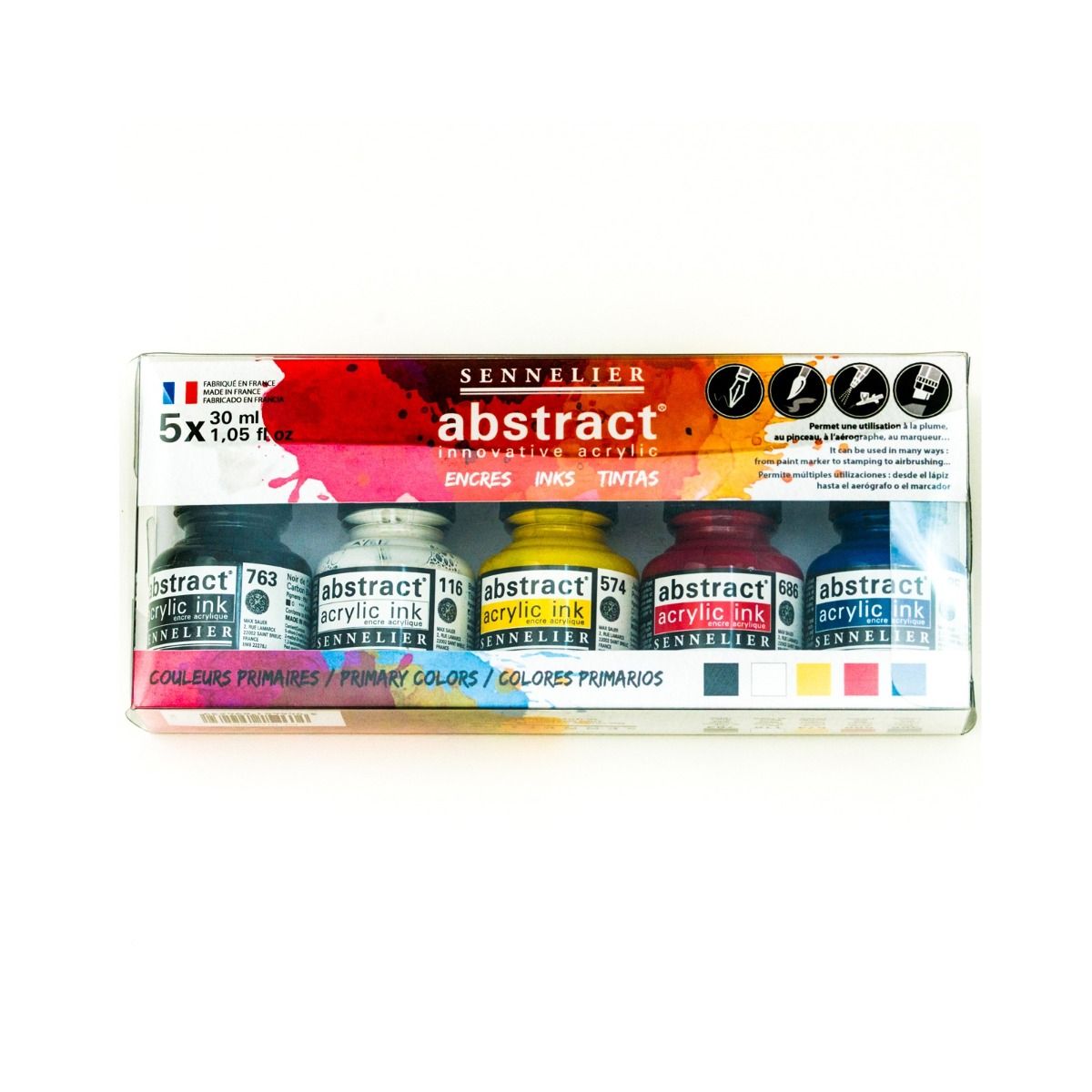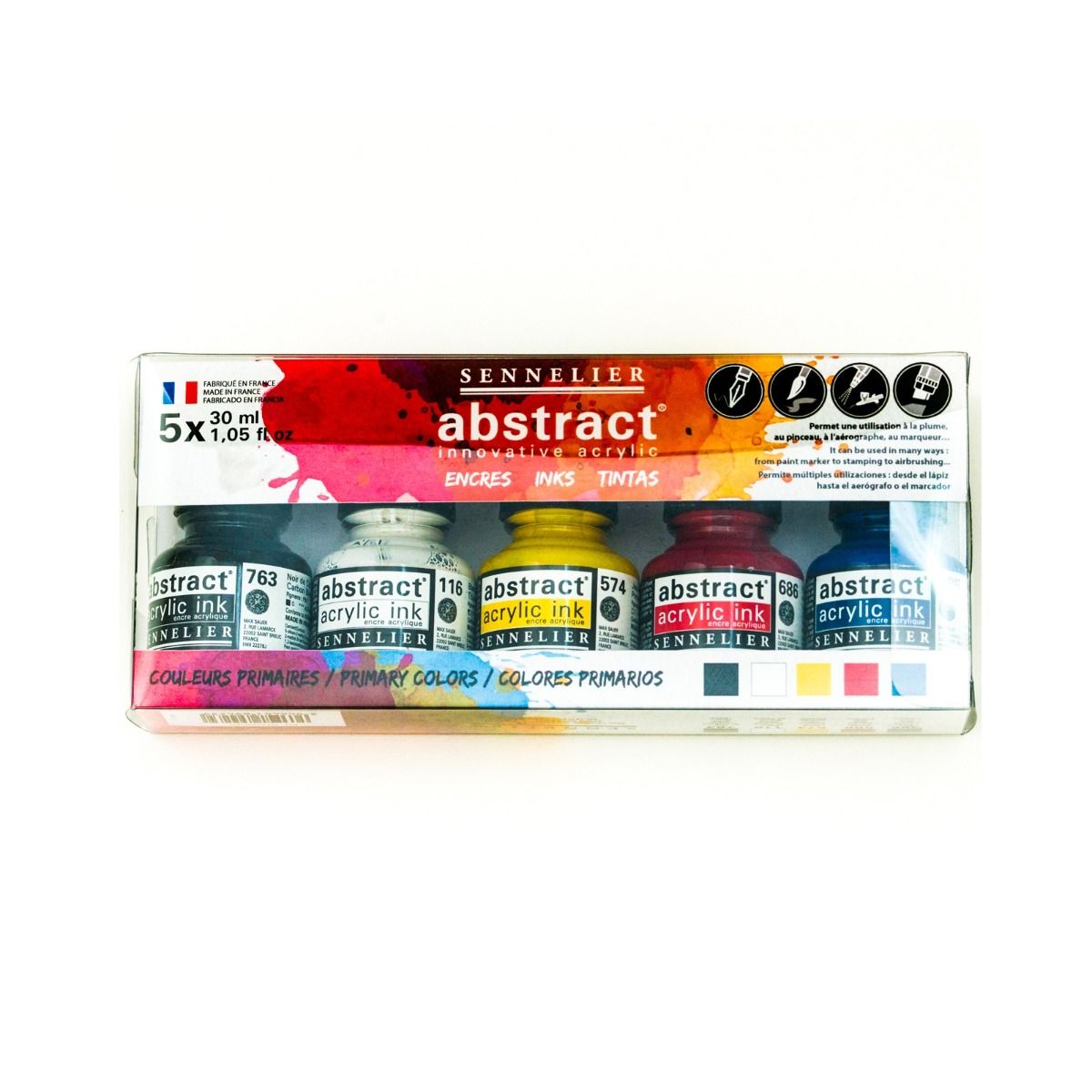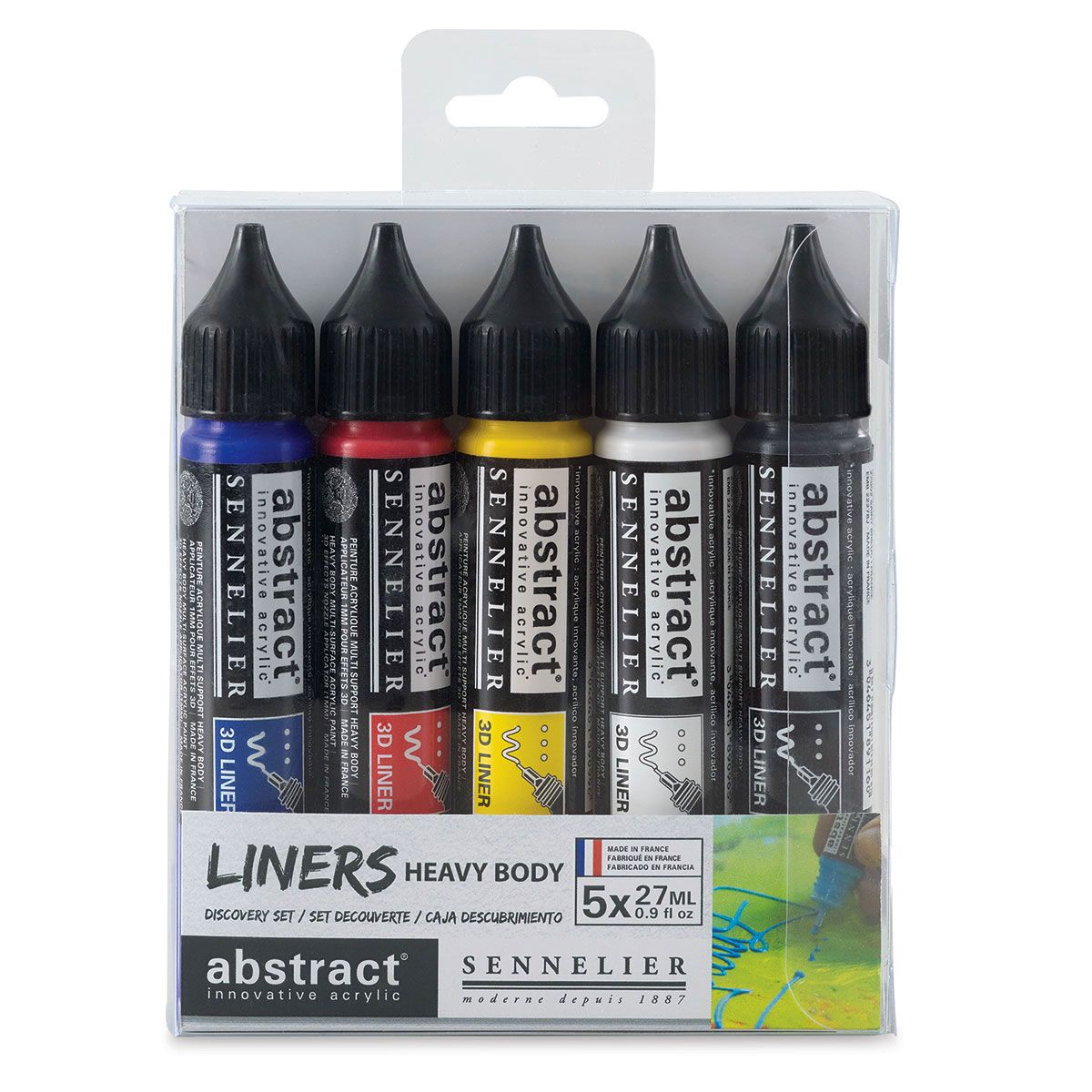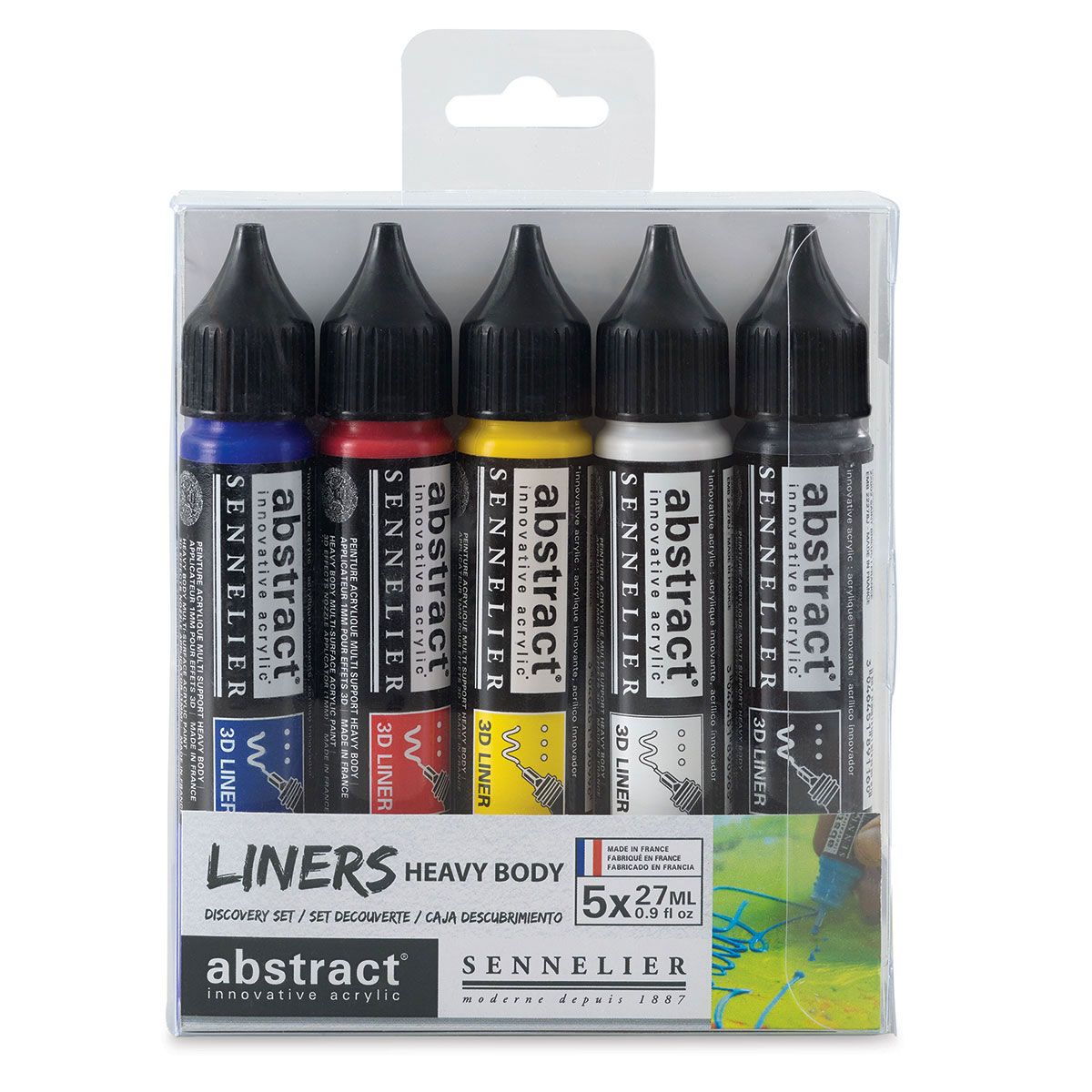Abstract Acrylic Pouch - Satin 205 Raw Umber 120ml
Raw umber is a cool dark brown. It's suitable for underpainting and adding to other colours to cool them down. These earth pigments PBk7-Lamp Black; PY42-Mars Orange; PY14-Diarylide Yellow 14; PR101-Red Iron Oxide makes a great luminous dark brown "raw umber" colour.
COMPOSITION AND PERMANENCE:
- Pigment Name: PBk7-Lamp Black; PY42-Mars Orange; PY14-Diarylide Yellow 14; PR101-Red Iron Oxide
- Pigment Type: Mixed
- Lightfastness: I *** Very Good
- Opacity: Opaque
- Conforms to ASTM D5098-03
- Warning: no significant hazards
ONE THAT COMES IN A PACKAGING THAT IS INNOVATIVE, ELEGANT, HANDY AND FEELS RIGHT.
Raw umber is a cool dark brown. It's suitable for underpainting and adding to other colours to cool them down. The traditional dark brown colouration of Raw and Burnt Umber is partially from red iron oxide and partially from manganese oxides impurities. It is the manganese that makes the dark brown colour. The pigment known as raw umber or natural umber found initially in Umbria, Italy, is partially from red iron oxide and partially from manganese oxides impurities. The manganese makes the dark brown "raw umber" colour.
These earth pigments PBk7-Lamp Black; PY42-Mars Orange; PY14-Diarylide Yellow 14; PR101-Red Iron Oxide makes a great luminous dark brown colour.
COMPOSITION AND PERMANENCE
Pigment Combination: PBk7-Lamp Black; PY42-Mars Orange; PY14-Diarylide Yellow 14; PR101-Red Iron Oxide
1 PIGMENT NAME: PBK7-LAMP BLACK
Pigment Type: Inorganic
Chemical Name: Carbon
Properties
Lampblack is a very opaque, heavily staining black pigment that does not have much covering or tinting power. It is typically the opaquest black in watercolour form. Though a very pure black, it tends to muddy slightly in mixtures. Natural sources may be brownish or bluish in tone because of impurities. When used in oil paints, it is one of the slowest drying pigments and should not be used in underpainting or applied in layers underneath other colours.
Permanence
Lamp Black is very lightfast and permanent. It is used in all techniques in permanent painting.
Toxicity
Carbon itself is not considered hazardous; however, other combustion products that are hazardous are often present as impurities when Lamp Black is produced from natural materials. For this reason, commercial preparations of the pigment should be considered.
History
Lamp Black is a carbon-based black traditionally produced by collecting soot (known as lampblack) from oil lamps. It has been used as a pigment since prehistoric times. It is the black found in Egyptian murals and tomb decorations and was the most popular black for fresco painting until the development of Mars Black.
2 Pigment Name: PY42-Mars Orange
Pigment Type: Inorganic, earth
Chemical Name: Iron oxide
Properties
Mars Orange is a bright, extremely light red and appears almost pinkish compared to darker colours. It has incredible tinting strength and opacity. The synthetic form of Mars Orange is made from iron oxides and is cleaner, brighter, and denser than its ochre-based counterparts.
Permanence
Mars Orange has excellent permanence and lightfastness.
Toxicity
Mars Orange has no significant hazards.
History
The word Mars refers to the Roman god of iron and war. Mars Orange has been manufactured as a pigment since the 17th century.
3 Pigment Name: PY14-Diarylide Yellow 14
Pigment Type: Organic, disazo
Chemical Name: n/a
Properties
Pigment PY14 offers a bright yellow.
Permanence
Pigment PY14 has been reported to fade with exposure to the sun.
Toxicity n/a
History
The diarylide yellows are a family of bright yellow pigments with a similar molecular structure. Discovered by Griesheim-Elektron, Pigment Yellow 14 has been used in lithographic and offset printing applications, textiles, plastics, and paints.
4 Pigment Name: PR101-Red Iron Oxide
Pigment Type: Synthetic, earth
Chemical Name: iron oxides (synthetic), iron oxide, silica, alumina, lime, and magnesia or hydrated iron oxide
Properties
Red iron oxide varies in hue and transparency, depending on hydration and slight impurities. Indian Red is a slightly duller, deep brick hue with a bluish undertone. It is very dense and opaque, with excellent tinting strength and covering power. It is dependable when mixing with all other permanent pigments and yields good flesh tints when mixed with Zinc White. It is the synthetic version of PR102, a pigment made from earth reds or natural red iron oxides, and the names applied to PR101 and PR102 often overlap.
The synthetic red iron oxides have mostly replaced natural red iron oxides and are brighter, more robust, refined, and permanent. Indian Red is the highest grade bluish shade. Light Red, English Red, and Venetian Red are yellowish shades. Mars Violet is a dull and subdued bluish or purplish oxide.
Permanence
Red iron oxide is very lightfast with excellent permanence.
Toxicity
Red iron oxide has no significant hazards.
History
Natural red iron oxide comes from the mineral ore hematite, called bloodstone by the ancient Greeks from the word hema, meaning blood. It is one of the oldest pigments, has been used by every major civilization, and was an essential mineral for medieval alchemists. It was not widely used in artists' materials until the 17th century and was not produced in large quantities until the 18th century.
| Brand | Sennelier |
|---|---|
| Country of Manufacture | France |
| Type of Store Credit value | Select |










